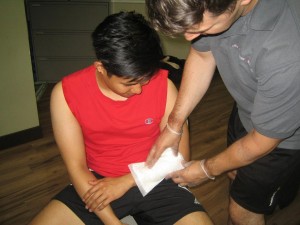A scrape of scratch involves the upper skin layers. In most cases, they are not deep but might cover a wide area of skin. Most cases occur due to the following:
- Accidents in sports or workplace or falls
- Being struck with a sharp, hard or pointed object
- Using rough, sharp or jagged objects in the workplace
- Being bit or scratched by an animal
What are the characteristics?

- Pain or discomfort
- Evident damage in the skin or loss of skin
- Bleeding
- Redness
Management of a scrape or scratch
The treatment for a scrape or scratch is based on the cause, size, location and shape. If the wound is kept clean, it hastens the healing as well as lower the risk for infection and scarring.
Some of the commonly used self-care measures for a scrape or scratch include:
- Thoroughly wash hands using water and soap for up to 15 seconds before caring for the wound.
- Cleanse the wound using water and mild soap. Make sure that any dirt or debris are removed.
- If bleeding is present, apply pressure on the site using a bandage until the flow of blood stops, usually up to 20 minutes.
- Make sure that the wound and bordering area is kept clean and dry until it scabs over. A bandage can be placed over the site to keep it dry and clean. The bandage must be changed daily and if it is dirty or soiled.
- An over-the-counter antibiotic ointment can be used.
Quick Note / Disclaimer
The material posted on this page on wound care is for learning and educational purposes only. To learn perform proper wound care, register for a first aid and CPR course with Red Deer First Aid.
